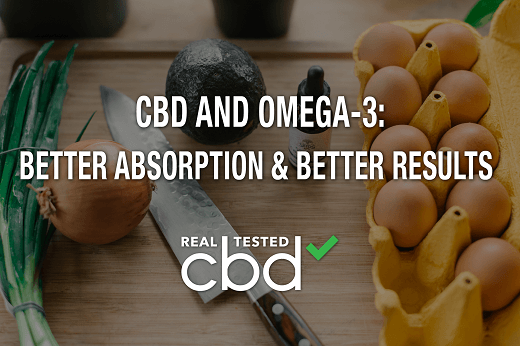CBD and Omega-3: Better Absorption & Better Results.
Introduction
CBD has taken the health and wellness industries by storm, and the rise in popularity is well founded. CBD or cannabidiol is one of many naturally occurring compounds in cannabis and hemp plants. Though CBD is still in the early stages of scientific research and trials, there is promise in the direction of pain management, inflammation reduction, anxiety relief, and sleep aid. So how do we maximize the effects of this naturally relieving gift? It could be as simple as Omega-3s.

What is CBD? How Do Fatty-Acids Help CBD Work?
CBD is one of over 100 compounds that are derived and can be extracted from hemp and cannabis plants. CBD is often confused with another popular and well-known cannabinoid, THC which is best known for its psychoactive properties. Both CBD and THC interact with the endocannabinoid system (ECS), but they can impact the human body and brain much differently. CBD is becoming more and more well known for its ability to impact cell metabolism through the ECS. This bodily system is responsible for managing a range of physiological functions like an inflammatory response, mood regulation, pain management, metabolism, etc.
Research and scientific studies are still limited but continue to emerge surrounding CBD and its interaction with the ECS and potential therapeutic benefits. Based on anecdotal evidence and the studies readily available today, CBD is believed to work with the ECS by attaching to receptors that transmit messages to the brain, mimicking the body’s own endocannabinoids, and releasing serotonin. The human body’s endocannabinoid system is made up of lipids that are naturally comprised of a cell’s omega-3s and omega-6s. These lipids stimulate the receptors of a cell, promoting a specific response from the body and brain, similar to the way CBD can impact the receptors in the ECS.
Omega-3s and Omega-6s are fatty acids vital to the human body and its cellular function. Our bodies build up these fatty acids, the endocannabinoids or lipids in the human body are created readily in response to stimulating brain activity. Because CBD and omega-3s both directly with the endocannabinoid system, the connection between one improving the effectiveness of the other is becoming more prevalent.
Improving Your CBD Experience with Omega-3s
The body’s natural endocannabinoids are produced internally rather than coming from outside, made from the omega-3s already present in your cells. This means when we eat foods high in these healthy fats like nuts, seeds, or fish, or taking supplements that contain can transform and up the ante of the body’s naturally occurring endocannabinoids. Essential fatty acids can help receptors in the body perform their functions. By adding more omega-3s to your diet, in conjunction with CBD, could improve its therapeutic benefits and your overall health.
The bottom line, to get the most out of using CBD, you have to make sure your body is set up for ideal absorption. If you are deficient in omega-3s, your CBD dose will be working harder to deliver any of its potential therapeutic properties.
If you are in looking for a great CBD product to try in conjunction with an omega-3 supplement or high healthy-fat diet, a CBD oil or tincture is a great place to start. CBD oil is consumed sublingually, which means it can enter the bloodstream almost immediately, delivering results quickly. To ensure you are purchasing and consuming a quality CBD product, it is always best to turn to companies that utilize third-party lab test results. Turn to Real Tested CBD for product comparisons and your most reliable sources for all things CBD. For more information on Real Tested CBD and which products are best for you to use with omega-3s, click here.
